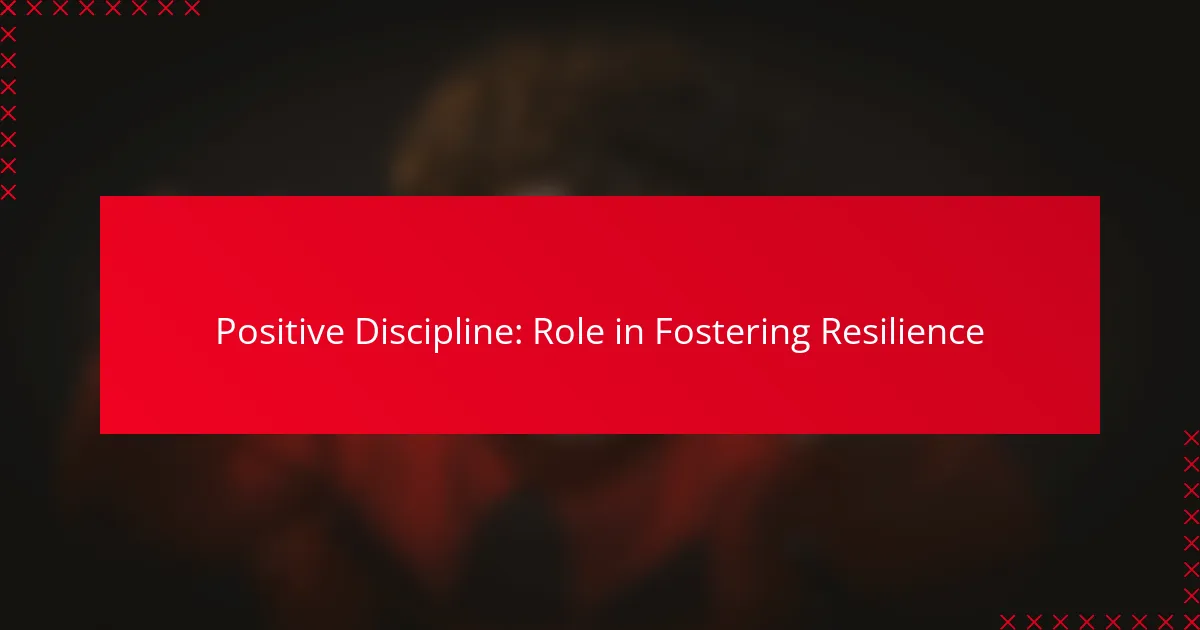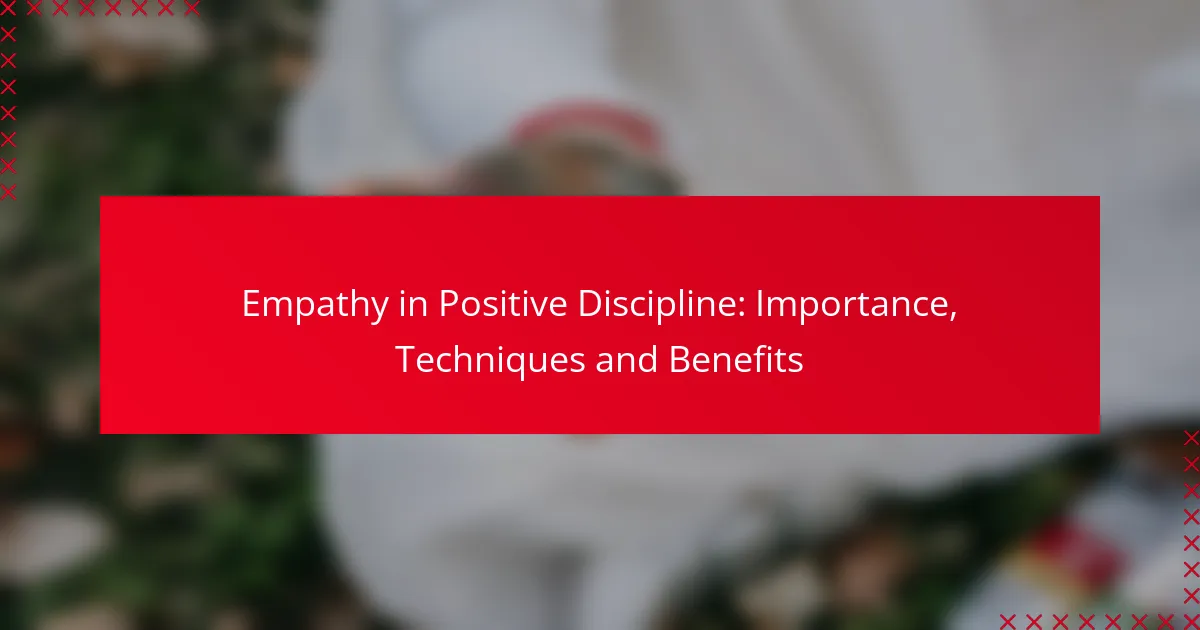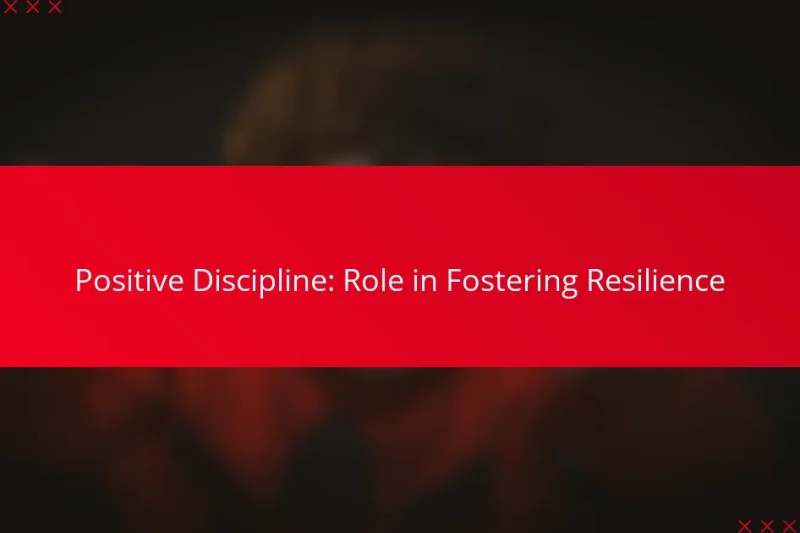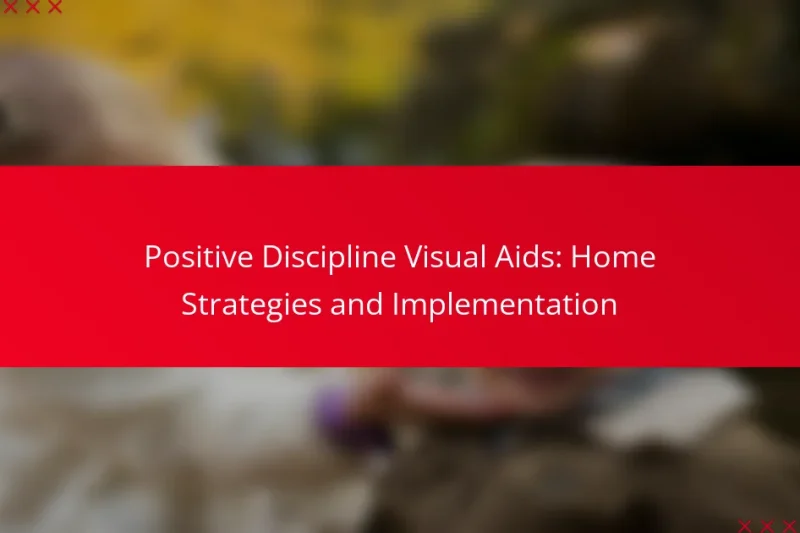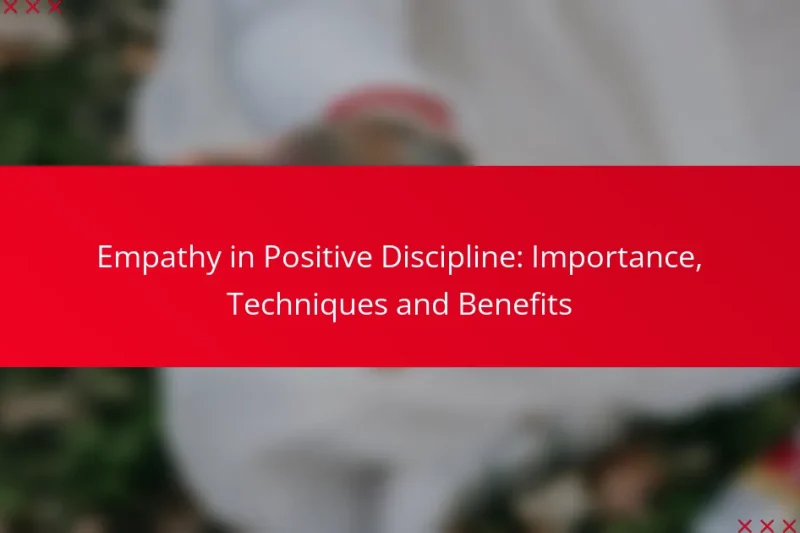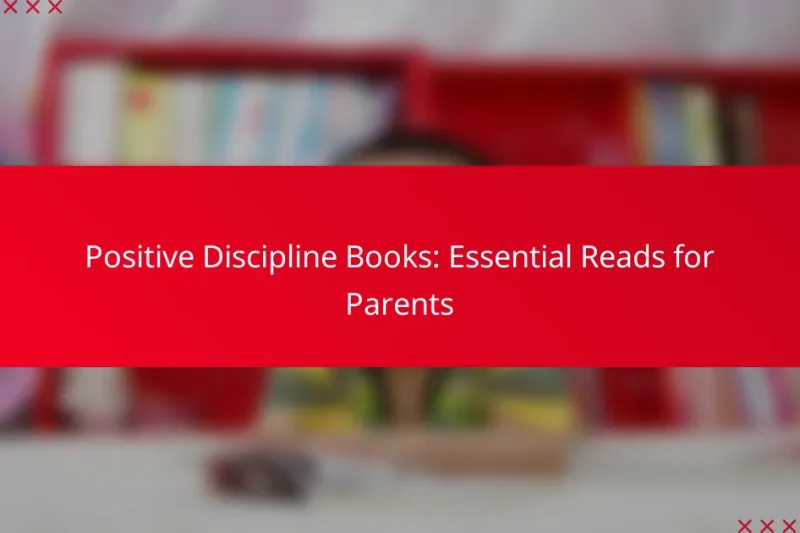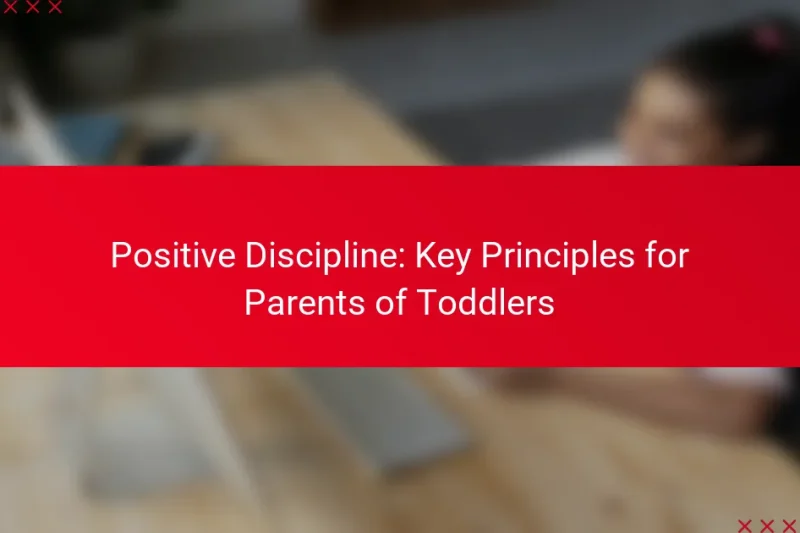Positive Discipline plays a crucial role in fostering resilience in children by equipping them with essential … Positive Discipline: Role in Fostering ResilienceRead more
Positive discipline is an approach that emphasizes guiding children's behavior through supportive and constructive methods, fostering self-discipline and emotional intelligence. By focusing on teaching appropriate behaviors rather than punishment, it nurtures a respectful parent-child relationship and promotes healthy development. This strategy encourages self-regulation and accountability, ultimately shaping well-rounded individuals.
Positive Reinforcement: Benefits, Methods and Applications
Positive reinforcement is a powerful tool that fosters improved behavior, motivation, and learning outcomes by rewarding … Positive Reinforcement: Benefits, Methods and ApplicationsRead more
Positive Discipline Visual Aids: Home Strategies and Implementation
Positive discipline visual aids are essential tools that help children grasp behavioral expectations and manage their … Positive Discipline Visual Aids: Home Strategies and ImplementationRead more
Empathy in Positive Discipline: Importance, Techniques and Benefits
Empathy plays a crucial role in positive discipline by enhancing communication and understanding between parents and … Empathy in Positive Discipline: Importance, Techniques and BenefitsRead more
Positive Discipline Apps: Tracking Progress and Engagement
Positive discipline apps are invaluable tools for parents and educators aiming to track progress and foster … Positive Discipline Apps: Tracking Progress and EngagementRead more
Positive Discipline Books: Essential Reads for Parents
Positive discipline books offer invaluable strategies for parents seeking to create a nurturing environment while effectively … Positive Discipline Books: Essential Reads for ParentsRead more
Creating a Support Network for Positive Discipline Practices
Creating a support network for positive discipline practices is essential for enhancing collaboration among caregivers and … Creating a Support Network for Positive Discipline PracticesRead more
Navigating Conflicts with Other Caregivers using Positive Discipline
Navigating conflicts with other caregivers can be challenging, but employing positive discipline techniques can foster a … Navigating Conflicts with Other Caregivers using Positive DisciplineRead more
Positive Discipline: Measuring Success in Your Home
Positive discipline is an effective approach for nurturing children’s behavior through encouragement and guidance rather than … Positive Discipline: Measuring Success in Your HomeRead more
Positive Discipline: Key Principles for Parents of Toddlers
Positive discipline provides parents of toddlers with effective strategies to guide behavior while nurturing a supportive … Positive Discipline: Key Principles for Parents of ToddlersRead more
What are effective positive discipline strategies for child development?
Effective positive discipline strategies focus on guiding children’s behavior through supportive and constructive methods. These strategies promote healthy development by fostering self-discipline, emotional intelligence, and a strong parent-child relationship.
Positive reinforcement techniques
Positive reinforcement involves acknowledging and rewarding desirable behaviors to encourage their recurrence. This can include verbal praise, small rewards, or additional privileges when a child exhibits good behavior. For example, if a child completes their homework on time, a parent might offer extra playtime as a reward.
To implement this effectively, be specific in your praise. Instead of saying "Good job," try "I really appreciate how you shared your toys with your friend." This clarity helps children understand exactly what behavior is being reinforced.
Setting clear expectations
Setting clear expectations means communicating specific rules and guidelines to children about what is acceptable behavior. This clarity helps children understand boundaries and the consequences of their actions. For instance, parents might establish a rule that screen time is only allowed after homework is completed.
When setting expectations, involve children in the process. Discuss the rules together and explain the reasons behind them. This not only fosters understanding but also gives children a sense of ownership over their behavior.
Consistent consequences
Consistent consequences are essential for effective discipline, as they help children learn the relationship between their actions and outcomes. If a child breaks a rule, the consequences should be predictable and fair. For example, if a child refuses to do chores, they might lose privileges like screen time for a day.
Ensure that consequences are age-appropriate and related to the behavior. This helps children understand why they are being disciplined and encourages them to make better choices in the future.
Emotional coaching
Emotional coaching involves helping children recognize and understand their feelings, which is crucial for their emotional development. Parents can guide children in expressing their emotions appropriately and developing empathy. For instance, if a child is upset after losing a game, a parent can help them articulate their feelings and discuss how to handle disappointment.
Encourage children to talk about their emotions regularly. This practice not only strengthens their emotional vocabulary but also builds resilience and coping skills for future challenges.
Modeling appropriate behavior
Modeling appropriate behavior means demonstrating the actions and attitudes you wish to see in your children. Children learn a great deal from observing their parents, so exhibiting positive behaviors such as respect, patience, and kindness is essential. For example, if a parent shows gratitude and politeness in daily interactions, children are likely to mimic these behaviors.
Be mindful of your reactions in various situations. Children are keen observers and will often imitate both positive and negative behaviors. Strive to model the behavior you want them to adopt, reinforcing the values you wish to instill.
How does positive discipline impact child behavior?
Positive discipline significantly influences child behavior by promoting self-regulation and accountability. It focuses on teaching children appropriate behaviors rather than merely punishing undesirable actions.
Reduces behavioral issues
Positive discipline helps in reducing behavioral issues by encouraging children to understand the consequences of their actions. Instead of fear of punishment, children learn to make better choices through guidance and support.
For example, when a child misbehaves, a parent can discuss the behavior's impact rather than resorting to harsh penalties. This approach fosters a sense of responsibility and reduces the likelihood of repeated misbehavior.
Enhances emotional intelligence
Implementing positive discipline enhances emotional intelligence by teaching children to recognize and manage their emotions. Through empathetic communication, children learn to express their feelings appropriately and understand others' perspectives.
For instance, when a child feels frustrated, parents can model coping strategies, such as deep breathing or talking about feelings, which helps the child develop emotional regulation skills over time.
Improves parent-child relationships
Positive discipline strengthens parent-child relationships by fostering trust and open communication. When parents approach discipline with empathy and understanding, children feel safe and valued, which enhances their connection with their parents.
Regularly engaging in discussions about behavior and feelings can lead to a more collaborative relationship. Parents should aim to listen actively and validate their child's feelings, which can prevent conflicts and build a supportive environment.
What are the key principles of positive discipline?
Positive discipline focuses on teaching children self-discipline and responsibility while fostering a respectful relationship. Its key principles emphasize understanding, guidance, and support rather than punishment.
Respect and kindness
Respect and kindness are foundational to positive discipline. This approach encourages parents and caregivers to treat children with dignity, acknowledging their feelings and perspectives. By modeling respectful behavior, adults help children learn to interact kindly with others.
Practicing respect involves active listening and validating children's emotions. For example, instead of dismissing a child's frustration, acknowledge it by saying, "I see you're upset; let's talk about it." This builds trust and encourages open communication.
Encouragement over punishment
Encouragement is a key element of positive discipline, promoting positive behavior through praise and support rather than punishment. This method helps children feel valued and motivates them to make better choices. Instead of focusing on what children do wrong, emphasize their strengths and efforts.
For instance, instead of scolding a child for not completing a task, recognize their effort by saying, "I appreciate how hard you tried." This reinforces positive behavior and fosters a growth mindset, encouraging children to learn from their mistakes.
Focus on solutions
Focusing on solutions is essential in positive discipline, guiding children to think critically about their actions and consequences. This principle encourages problem-solving skills and helps children learn to navigate challenges effectively. Instead of simply addressing misbehavior, involve children in finding constructive solutions.
For example, if a child struggles with sharing, ask them, "What can we do to make sharing easier?" This not only empowers them but also teaches valuable life skills. Encourage brainstorming and collaboration to foster a sense of ownership over their behavior and decisions.
What resources are available for parents in the US?
Parents in the US have access to a variety of resources that support positive discipline and child development. These include books, workshops, and online courses designed to equip caregivers with effective strategies and tools.
Books by Jane Nelsen
Jane Nelsen is a prominent author in the field of positive discipline, with several influential books that provide practical guidance for parents. Her most notable work, "Positive Discipline," outlines strategies that foster respect, responsibility, and problem-solving skills in children.
These books often include real-life examples, activities, and tips for implementing positive discipline techniques at home. Parents can find them in local bookstores or online retailers, typically priced between $15 and $30.
Workshops by the Positive Discipline Association
The Positive Discipline Association offers workshops across the US, aimed at helping parents and educators learn effective discipline strategies. These workshops typically cover core principles of positive discipline and provide interactive activities to practice these concepts.
Workshops can vary in length from a few hours to multiple days and may cost anywhere from $50 to $300 depending on the format and location. Parents can check the association's website for upcoming events and registration details.
Online courses on child development
Numerous online platforms offer courses focused on child development and positive discipline. These courses often include video lectures, reading materials, and discussion forums, allowing parents to learn at their own pace.
Prices for online courses can range from free to several hundred dollars, depending on the depth of content and certification offered. Popular platforms include Coursera, Udemy, and the Positive Discipline Association's own site, where parents can find tailored courses to suit their needs.
What are common misconceptions about positive discipline?
Many people mistakenly believe that positive discipline is synonymous with permissive parenting. In reality, positive discipline emphasizes teaching and guiding children while maintaining clear boundaries and expectations.
It is permissive parenting
Positive discipline is often confused with permissive parenting, but they are fundamentally different. While permissive parenting allows children to act without limits, positive discipline involves setting firm yet loving boundaries that promote responsibility and self-control.
In positive discipline, parents actively engage with their children to teach them appropriate behaviors rather than simply allowing them to do as they please. This approach encourages children to understand the consequences of their actions and fosters a sense of accountability.
For example, instead of saying "You can do whatever you want," a parent practicing positive discipline might say, "You can choose to play with your toys, but you need to clean up when you're done." This method reinforces the idea that choices come with responsibilities, helping children develop important life skills.
